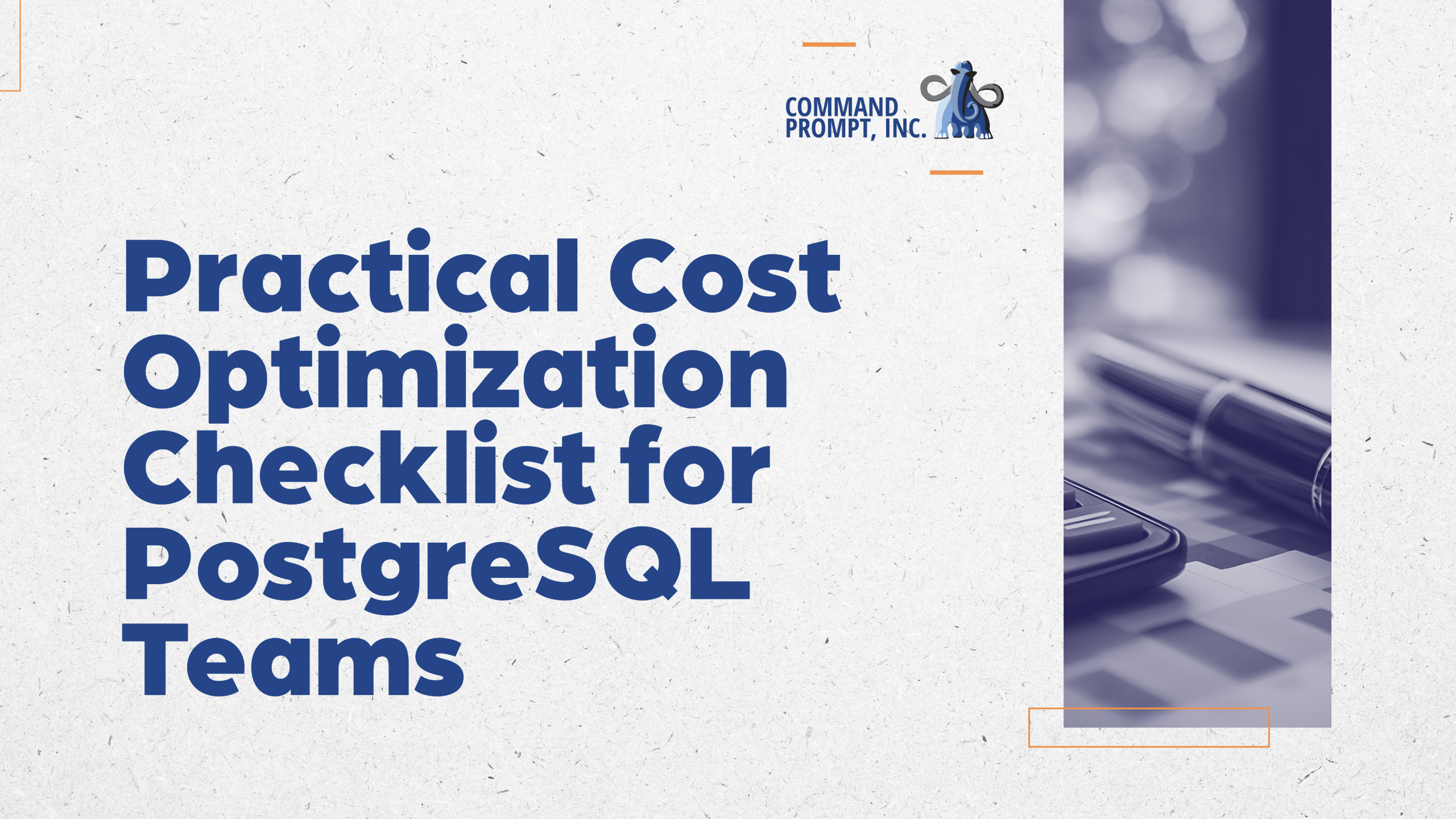
In a previous post, we explored the importance of right-sizing PostgreSQL environments and avoiding the trap of overprovisioning for peak demand. While architecture choices play a major role in cost optimization, the work doesn’t stop there. For technical teams including DBAs, system architects, and engineering directors, query performance and workload patterns offer some of the most direct, controllable levers for reducing cost without sacrificing quality.
Query Optimization: A Core Cost Lever
One of the most overlooked drivers of infrastructure cost is inefficient queries. While the slowest queries often attract the most attention, it is frequently the high-frequency, moderately slow queries that create the greatest strain. Over time, these queries can have an even larger impact on performance and cost.
Example:
A query that takes 50 milliseconds to execute may seem harmless. But if it runs 100,000 times per day, that adds up to nearly 1.5 hours of total CPU time daily. Reviewing and optimizing this kind of query could reduce CPU usage significantly, freeing up resources for other sessions or even allowing the instance size to be reduced.
Improving query efficiency doesn’t just improve performance. It helps right-size your environment by reducing CPU, memory, and I/O consumption.
Practical Cost Optimization Checklist for PostgreSQL Teams
Identify slow queries using pg_stat_statements, auto_explain, or third-party monitoring tools.
Sort by total execution time, not just duration per call.
Look for queries with high call counts and moderate execution time.
Optimize through indexing, rewriting, or reducing frequency (e.g., caching).
1. Query Performance Review
- Identify slow queries using pg_stat_statements, auto_explain, or third-party monitoring tools.
- Sort by total execution time, not just duration per call.
- Look for queries with high call counts and moderate execution time.
- Optimize through indexing, rewriting, or reducing frequency (e.g., caching).
2. Workload Segmentation
- Separate batch processing, reporting, and analytical workloads from transactional traffic.
- Use connection pooling to manage concurrency and reduce idle session overhead.
3. Instance and Storage Right-Sizing
- Monitor CPU, memory, and IOPS usage over time.
- Compare usage trends against instance size to identify overprovisioning.
- Scale down cautiously after validating performance during normal and peak hours.
4. Autovacuum Tuning
- Ensure autovacuum is running appropriately on high-write tables.
- Adjust settings to prevent bloat and avoid spikes in resource usage.
5. Archive and Partition Old Data
- Use partitioning to isolate hot data from cold data.
- Move infrequently accessed tables to cheaper storage or external systems.
6. Review Managed Service Fit
- Evaluate whether workloads require premium managed services like Aurora and Heroku Postgres.
- Consider self-managed PostgreSQL or other hosting options for predictable, stable workloads.
Cost optimization is a team effort. By reviewing query efficiency, understanding usage patterns, and selecting the right infrastructure components, technical staff can materially improve both performance and cost. Small improvements at the query level can translate into measurable gains across the environment—allowing PostgreSQL to scale sustainably and cost-effectively.
Let us know if you’d like help conducting a PostgreSQL workload review or query audit.
